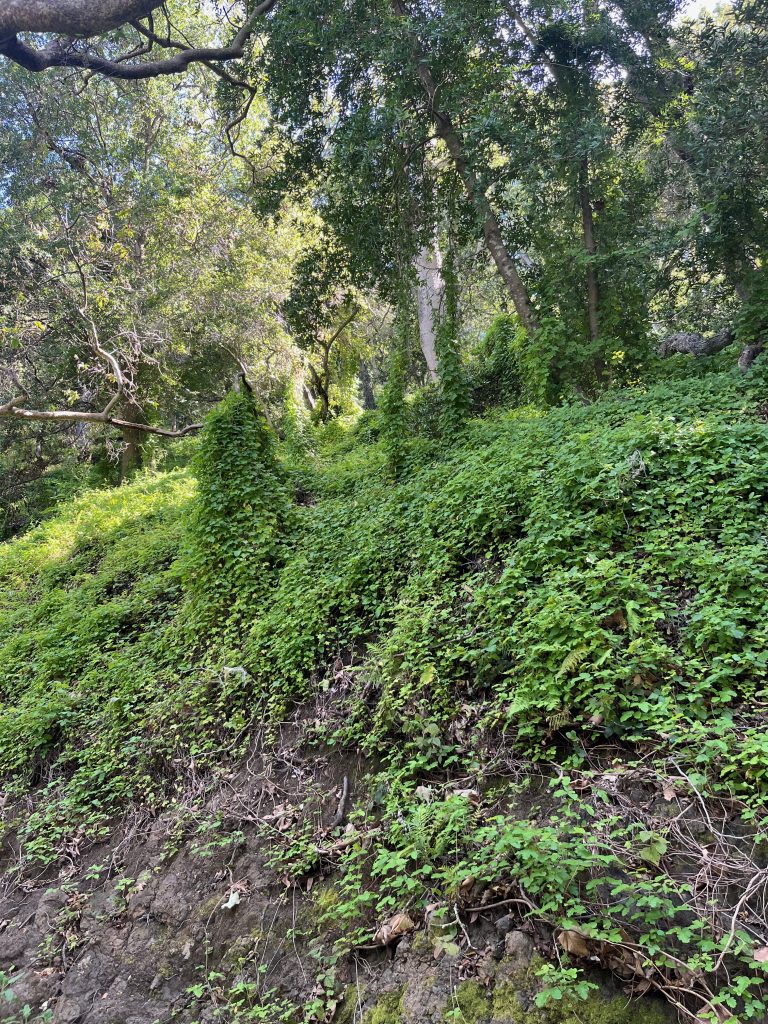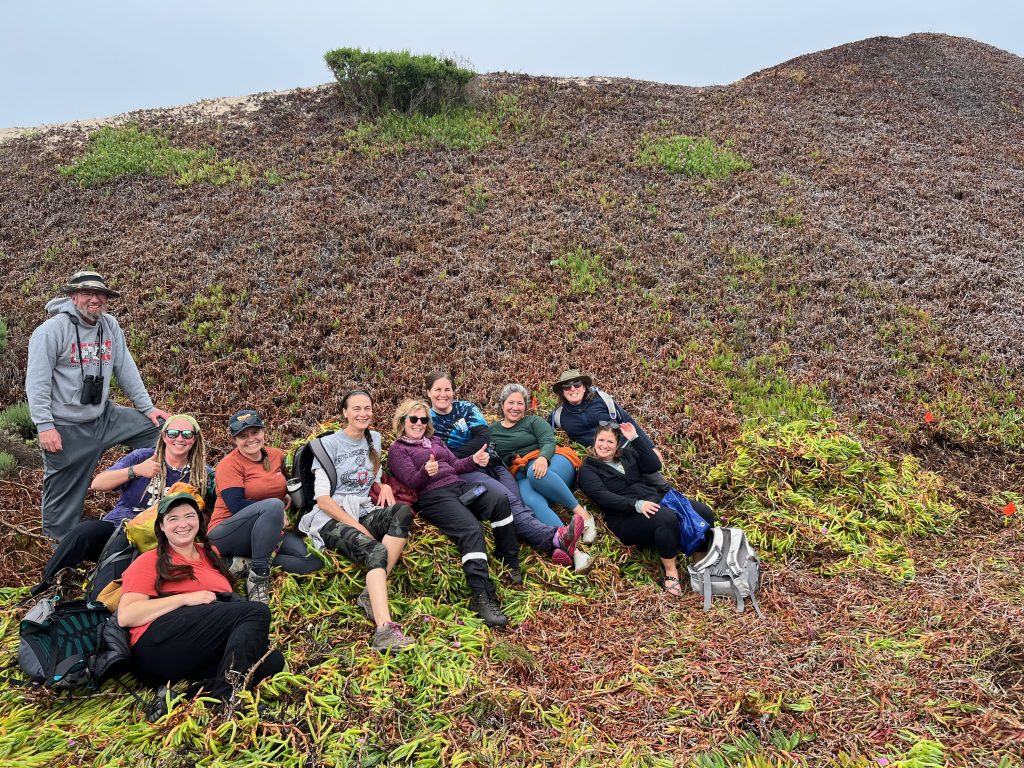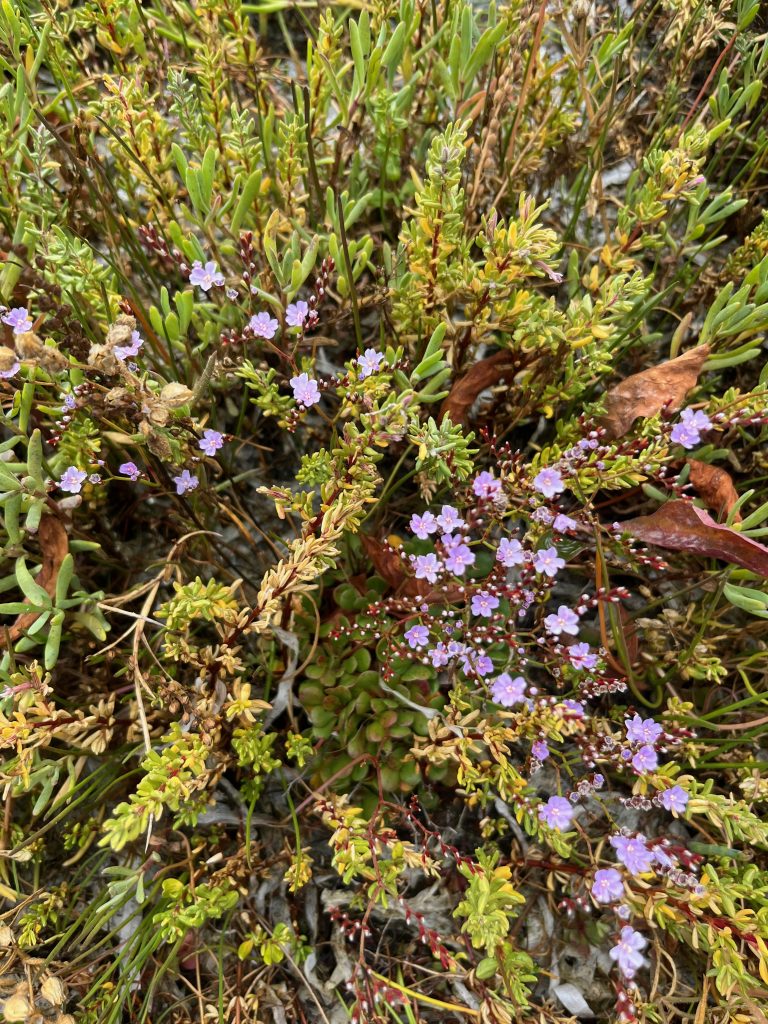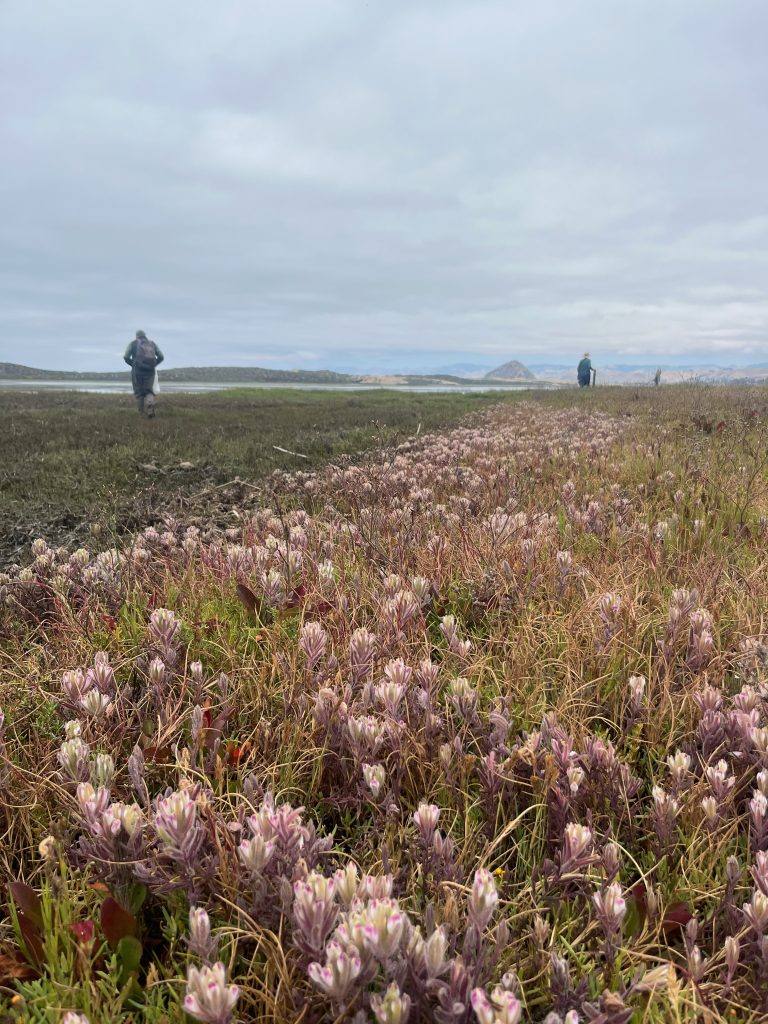In California, the first week of June is Invasive Species Action Week and is dedicated to raising awareness and inspiring action around invasive species. The effort is organized by the California Department of Fish and Wildlife and highlights the impacts that invasive species have on our ecosystems, economy, and health. Activities and events across the state aim to educate the public and promote participation in prevention, management, and eradication efforts. Communities can learn about invasive species and how to help protect our natural habitats.
What are Invasive Species?
Invasive species are non-native organisms that can spread rapidly and cause harm to the environment. While invasive animals like the New Zealand mud snail often capture attention, invasive plants are also of significant concern. Invasive plants can overrun landscapes, outcompete native vegetation, reduce biodiversity, and alter ecosystems. These plants not only disrupt habitats but also impact water resources, agriculture, and recreational areas. Understanding and addressing the challenges posed by invasive plants is crucial for preserving local ecosystems.
Here are some projects happening at the Estuary Program to address invasive species:
Invasive Species Mapping for Creek Health
This spring, the Estuary Program funded a project to map invasive species within the shaded creeks of the Chorro Creek subwatershed. Surveyors walked nearly ten stream miles and identified over 250 locations with invasive species.
We are planning for additional surveys this winter where we will use drone technology to find large invasive species like giant reed (Arundo donax). After the map is completed, we will work with partners and seek additional funding to implement invasive species management.

Iceplant Management for Dune Resilience
Iceplant (Carpobrotus edulis) is a coastal succulent shrub native to the coast of South Africa. It can be found throughout California, where it poses a serious threat to local biodiversity. Its thick mats can outcompete native plants, which can change the surrounding soil composition and increase erosion.
The Estuary Program has been working with partners and volunteers to manage iceplant in the watershed. We have successfully reduced iceplant cover in 33 acres of the Morro Bay sandspit. In some areas, we have seen as much as a 30% reduction in live iceplant cover between our October 2023 and May 2024 vegetation monitoring surveys. While this work is still ongoing, we are very excited by the initial results.

To read more about iceplant in Morro Bay, check out this blog: https://www.mbnep.org/2022/09/23/the-fight-against-ice-plant-revealing-the-morro-bay-dunes/.
Sea Lavender Removal in Tidal Marsh Habitat
Another non-native species present in Morro Bay is invasive European sea lavender (Limonium duriusculum). This plant poses a serious threat to biodiversity as its dense growth can quickly displace native plants. Expansion of sea lavender may also threaten localized populations of salt marsh bird’s beak (Chloropyron maritimum ssp. maritimus), which is a rare plant that relies on the unique conditions of Morro Bay tidal marshes.
The Estuary Program works with volunteer support to survey and manually remove sea lavender from locations throughout the bay. To learn more about this effort, check out this blog: https://www.mbnep.org/2021/08/06/field-updates/.


How Can You Help?
Check out the California Department of Fish and Wildlife’s CAISAW website for more information on events, games, and resources. Here are some tips from CDFW to help prevent invasive species in your community:
- Volunteer for invasive species removal or habitat restoration projects. Follow the Estuary Program’s Eventbrite page to be notified of future events. Check out other local organizations in your area.
- Join the statewide community science effort to monitor for invasive species.
- Select native or non-invasive plants for your garden.
- Use only certified “weed-free” forage, hay, seed, mulch, soil, and gravel.
- Learn how to prevent the spread of invasive species during your outdoor adventures from PlayCleanGo.
Help us protect and restore the Morro Bay estuary!
- Donate to the Estuary Program today and support our work in the field, the lab, and beyond.
The Estuary Program is a 501(c)3 nonprofit. We depend on funding from grants and generous donors to continue our work. - Support us by purchasing estuary-themed gear from ESTERO. This locally owned and operated company donates 20% of proceeds from its Estuary clothing line and 100% of Estuary decal proceeds to the Estuary Program. Thank you, ESTERO!
- Purchase items from the Estuary Program’s store on Zazzle. Zazzle prints and ships your items, and the Estuary Program receives 10% of the proceeds.
- Subscribe to our seasonal newsletter: Between the Tides!
- We want to hear from you! Please take a few minutes to fill out this short survey about what type of events you’d like to see from the Estuary Program. We appreciate your input!